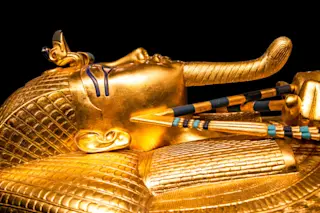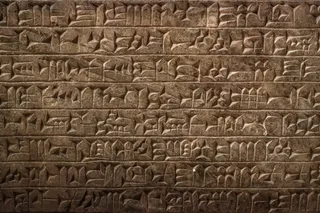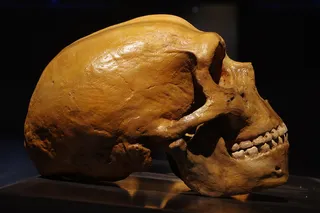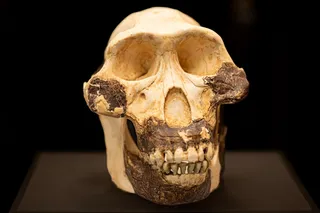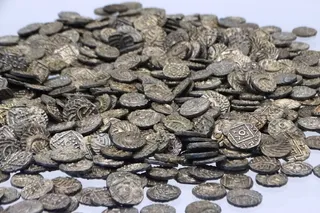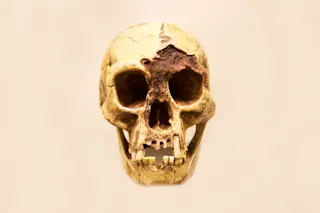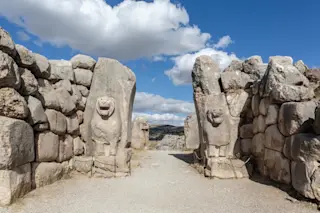To call King Tut’s genealogy complicated might be one of the biggest understatements in Egyptology. For example, Queen Nefertiti, once thought to be Tutankhamun’s birth mother, was actually his stepmother, as well as his mother-in-law. His parents were siblings and Tut’s wife may have also been his half-sister.
Tut has fueled fascination ever since archeologists discovered his tomb in 1922. Although the Valley of the Kings burial place held over 5,000 artifacts, much of his heritage remained a mystery.
His parentage was unclear and there was little solid evidence to tie him to relatives. That changed somewhat in 2010 when a group of scientists published DNA tests from many mummies linked to Tut — including that of the Boy King himself.
Although the study cleared up some confusion, the work raised other questions. While the DNA evidence from mummies is strong, it is not perfect. The samples extracted from the mummies for genetic testing were fragile, and thus, not completely reliable. Artifacts from tombs, as well as inscriptions, engravings, and paintings help, but can prove more circumstantial than conclusive.
Here’s what we know about Tut’s lineage, how we know it, and how certain we can be.
King Tut's Father
Several sets of “genetic fingerprints” showed Tut was Amenhotep’s son. The two also shared the same blood type and several physical features.
Amenhotep was considered a “heretic king” because he rejected polytheism, urging his followers to worship a single sun god. This did not go over well and may have led to the destruction of some Amenhotep artifacts. That, in turn, makes tracing some of his descendants more difficult.
Making things even more confusing, he changed his name to Akhenaten in the fifth year of his reign.
Read More: The 6 Most Iconic Artifacts From The Ancient World
Was King Tut's Mother Nefertiti?
Queen Nefertiti — one of the most prominent ancient Egyptian personalities due, in part, to many artifacts commemorating her — was once a prime candidate for Tut’s mother. But genetic tests ruled that out.
"Now I'm sure that it cannot be Nefertiti, and therefore the mother of King Tut is one of the daughters of Amenhotep III and Tiye — and there are five," Zawi Hawass, one of the world’s most prominent Egyptologists said in 2010 after the study was published.
The same goes for a Mitanni princess named Kiya. Records show that she was prominent in the royal court’s activities until shortly before Akhenaten died. But the genetic tests showed no conclusive genetic linkage to Tut. Her coffin was gilded in a style similar to Tut’s, which indicates the royals looked upon her favorably.
Genetic tests also showed that Tut’s mother was also his father’s sister. Since his parents were siblings, that makes Tut’s mother his aunt and his father his uncle.
There is surprisingly little physical evidence about Tut’s mom, unlike the flashy Nefertiti. Even though Tut’s tomb held thousands of objects, none states his mother’s name.
Read More: Ancient Egypt's Fiercest Female Rulers
Nefertiti Could Have Been Tut's Stepmother
Nefertiti was Akhenaten’s first, and, perhaps “main” wife. She also supported Akhenaten’s unpopular monotheistic beliefs. She had at least six daughters with him.
Nefertiti is believed to have mothered Tut’s wife. However, since no mummy has yet been definitively named as Nefertiti, there can be no genetic tests “downstream” of Tut. If her mummy were found and she could be genetically matched to the two stillborn girls buried near Tut (considered his daughters), that would almost conclusively establish her role in the lineage.
Read More: Nefertiti's Final Resting Place Continues to Polarize and Captivate
Was Ankhesenamun King Tut's Wife or Half-Sister?
Tut’s wife, Ankhesenamun (also known as Ankhesenpaaten), is believed to be the child of Tut’s father and Neferetiti. However, although several mummy candidates have been identified, none conclusively linked to her through genetic testing.
Many items in Tut’s tomb appear to refer to her, as well as some in Akhenaten’s burial place. But there are few traces of her after Tut’s death.
However, there’s the intriguing possibility that she may have tried to maintain power through marriage after Tut passed away.
The “Deeds of Suppiluliuma” recounts the reign of the Hittite king via cuneiform on clay tablets. The tale involves a widowed queen of Egypt asking the Hittite king to send a son so that she could marry and continue to rule. The letter refers to her only in a phonetic version of the phrase “king’s wife.”
The recipient was also known to have been in correspondence with Tut’s father. So, although the evidence remains circumstantial, the time frame seems logical and the scenario plausible, some Egyptologists think.
Read More: How Ancient Egyptians Preserved Bodies for the Afterlife
A Mystery Pharoah
Many Egyptologists believe there was a gap between Akhenaten’s death and the time Tut assumed the throne. There is also some evidence that this was a female pharaoh — something for which there has been precedent.
Someone reigned during that time, bearing the name Neferneferuaten Ankhkheperure. There are several plausible theories, but no definitive evidence for any of them. Here are three candidates:
1. Nefertiti Could Have Been the Pharoah
Both her name’s proximity to the ruler’s (they both began with “Nefer”) as well as her tenure reining with Akhenaten make her a plausible candidate.
Many Egyptologists think she underwent a name change when she transitioned to pharaoh.
Hawass theorized that Nefertiti returned to Thebes based on some feminine evidence of a female pharaoh found in Tutankhamun's tomb. There are also records of Nefertiti attacking Egypt's enemies — an activity associated with pharaohs.
Arguments against Nefertiti include the “name overlap” not being substantial enough evidence. Also, Akhenaten’s successor tried to steer religion back to polytheism, which is contrary to Nefertiti’s earlier views.
2. Was Meritaten the Pharoah?
The oldest of six daughters of Ahkenaten and Nefertiti, her birth order and age would make it logical for her to take over as “interim pharaoh” after her father died.
However, the name Ankhkheperure Neferneferuaten doesn’t bear any connection to her birth name, which is unusual for naming practices of the time.
Some have speculated that she served as Tut’s wet nurse.
3. Neferneferuaten as Pharoah
One recent theory holds that Meritaten first served as a queen with her father. Then, when youngest sister Neferneferuaten came of age, she was crowned king, with the older sister maintaining the “queen” title.
This would have been done to keep the family in power until Tut became old enough to rule. Several pieces of art and writing support this view, says Valérie Angenot, an art history professor at the University of Quebec at Montreal.
Also, Meritaten, not Tut’s wife, may have been the anonymous “king’s wife” who asked the Hittite king to supply a son she could marry, Angenot adds. Angenot presented this theory at a conference in 2022, but it remains controversial.
Read More: Was Nefertiti Egypt’s Leading Lady Before King Tut?
The Intrigue of King Tut's Family Tree
More details about Tut’s wife, mother, and successor will likely remain shrouded until there’s another major archeological find. That could happen sooner rather than later.
Hawass says he’s searching for Nefertiti’s tomb in the Valley of the King as well as seeking to perform DNA tests on mummies that may eventually prove to be Tut’s missing relatives.
Read More: We Celebrate King Tut, But He Was Once Erased From Ancient Egyptian History
Article Sources
Our writers at Discovermagazine.com use peer-reviewed studies and high-quality sources for our articles, and our editors review for scientific accuracy and editorial standards. Review the sources used below for this article:
JAMA Network. Ancestry and Pathology in King Tutankhamun's Family.


